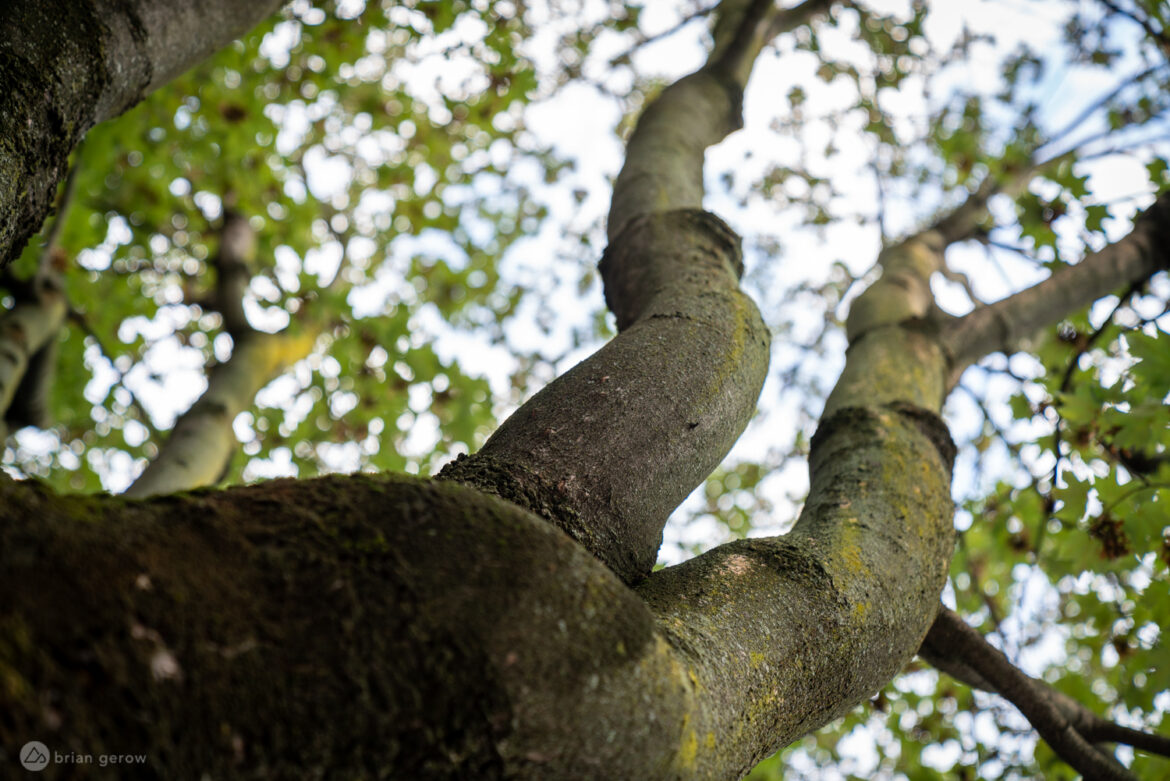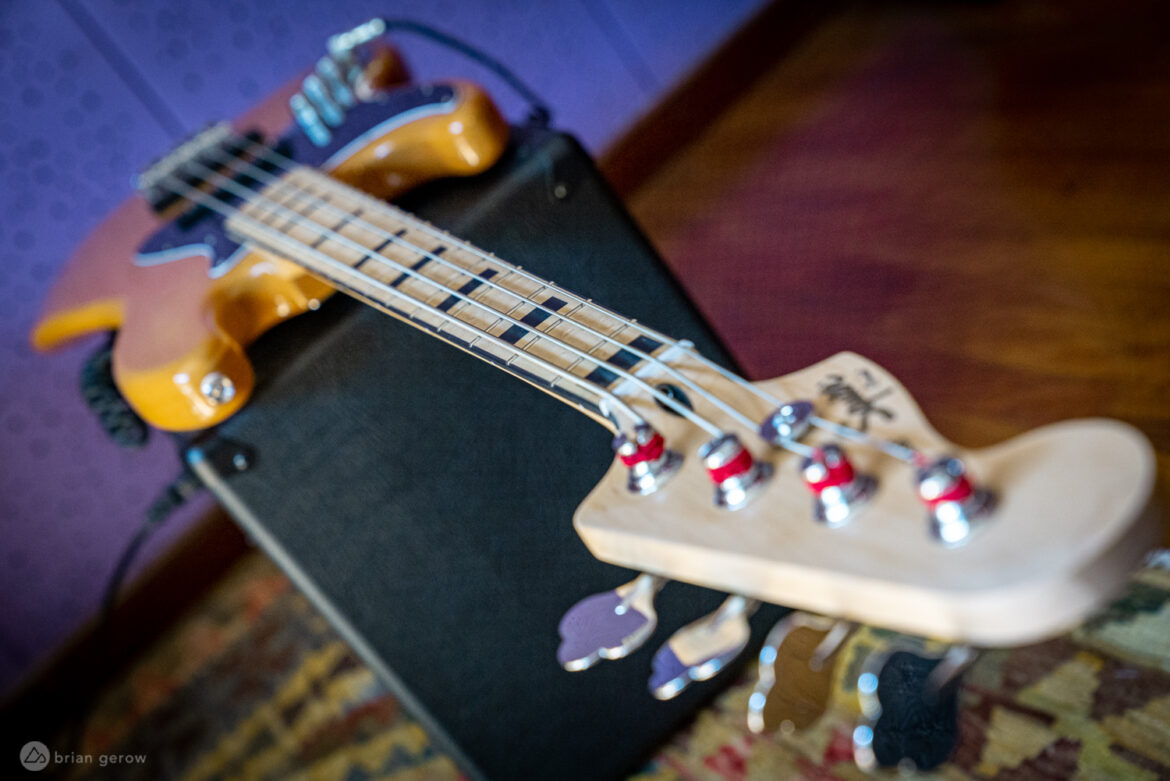
Our trees in the northern hemisphere are about to receive a fresh paint job. The bold green leaves that cast shade on trails through the summer months will shift to a partial rainbow of yellow, orange, red, and brown. Deciduous trees, like the pancake-topping maple (genus Acer), give up their light gathering green for the season and prepare a long cool rest. Our trails will grow louder with detritus as the sky opens up for the thinning canopy.
Fossils from some of the 128 species of maple trees have been found among those of dinosaurs, and those vastly different species can grow to over 100 feet or shrub closer to the ground at human height. The Big Leaf Maple (Acer macrophyllum) is one of the tallest, with a few thick trunks branching in close proximity as it stretches upward. The tallest specimen recorded, found in Redwoods State Park, California, is a towering 160.43ft with a circumference of 9.5ft. Big Leaf maple live in mixed stands along the western coast of southern British Columbia and the US, typically cohabitating with conifers and oaks.

The Sugar maple (Acer saccharum) is the primary source of maple syrup. While syrup can be extracted from several species, the flavor this tree produces is preferable and commodified. According to the provincial website of Ontario Canada, “It takes about 40 liters of sugar maple sap to make 1 liter of maple syrup.” That tree must have to hydrate frequently. Sugar maple can grow as tall as 130 feet, and the tree’s smooth grey bark furrows with age. These syrup producers grow all over eastern Canada and the eastern US, spreading west all the way to Minnesota.

One of the most unique-looking species has to be the Paper Bark maple (Acer griseum). Its ever-peeling bark is noticeable from a distance, extending from the trunk to the tree’s smaller branches. This species, commonly used to decorate gardens across Europe and North America, grows naturally in mid-elevation climates throughout China. Flaking bits of bark span a medium size frame at full maturity, with most specimens topping out at 30-40 feet. While some riders will only see a Paper Bark maple in the park on their way to or from the trails, we can all dream about what flora and fauna that fill the forests Chinese riders pedal through on their weekend rides.
Identifying a maple

One way to identify a maple tree is to look at the Canadian flag and compare. Unfortunately, not all maple leaf trees take that same shape. They can have three, five, or seven lobes per leaf, and the leaves vary in size from the width of your fingertip to big leaf maple shaders that are larger than your head. The video below will get you started identifying two different common maple species.

Human and other animal uses

Apart from Canada printing a maple leaf on its flag to represent its resilient deciduous forests, humans have found loads of uses for the wood and sap of maple trees. One of the coolest contemporary uses is in musical instruments. The wood from some species is considered a tonewood, meaning that it works well to carry sound and to produce pleasing tones. All sorts of instruments, from guitars and drums to internal pieces of violins and violas are made of maple. Some maple species produce hardwood while others grow faster and create softer woods. The related strength and durability of the fibers from different species determines where they are used.

Maple is also used to make furniture, tool handles, flooring, and even bowling pins. Lumber from species like curly maple and spalted maple is often employed as an aesthetic laminant on tables and other surfaces for the beauty of their natural ripples and veins.
Native Americans harvest maple sap to make syrup, taffy, and meaningful legends. According to an article published by Michigan State University, “The Chippewa and Ottawa tribes of Michigan share a legend that begins with a god named NenawBozhoo, who saw that his people were becoming lazy as they drank the pure maple syrup from the maple trees rather than hunt or forage for food. When he saw this he cast a spell on the maple trees that made the syrup turn into a watery sap that required processing before it could be consumed.”

With a vast growing range encircling the globe, the number of animals that collect food from maple species and use the trees for shelter could fill a few hefty books. There are aphids that live off the tree’s nutrient-rich sap, occasionally stunting the growth of younger trees. Countless creatures feed on the tree’s nectar, and another group of worms and arboreal parasites bore their way into its bark. The seeds, called samaras, are eaten by birds and nearly every ground-dwelling animal that passes below.
Some of the animals and fungi that live off maple trees are notably harmful. In one fungal based example, “the verticillium fungus is a soil-borne disease and can remain dormant in the soil years before it makes an appearance. The fungus enters through the tree’s roots.” In a process called “verticillium wilt” the fungus slowly kills the tree by spreading through its vascular system. Another deadly fungal maple disease, known as sapstreak, also kills the tree from the inside out, and by the time symptoms are evident the internal systems are often full of disease. While some specimens will recover from these fungus infections, the majority have to be cut down to keep them from falling unexpectedly.
Maple Ginger Hot Toddy

While it’s not quite time for hot post-ride drinks in most places, this one is worth jotting down in your recipe book. This twist on the classic hot toddy is a delicious way to warm up your insides and flush your cheeks after a brisk fall spin.
Ingredients
- 2 bags of ginger tea
- 1.5 – 2 oz of Bourbon
- 2 tablespoons of fresh lemon juice, or less to taste
- 1 teaspoon of maple syrup
- Lemon peel garnish
Like a traditional toddy, you can add cinnamon and other spices to find the combination you prefer. Enjoy!




















0 Comments